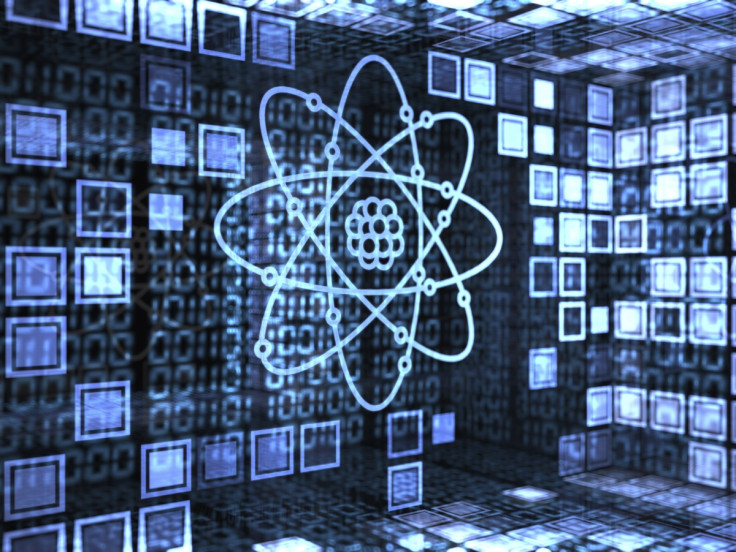Physicists prove Einstein still wrong about quantum mechanics with record-breaking trapped ion tests
The first ever chained Bell test on trapped ions proves this method could be best for quantum computers.

Physicists from a US government agency have made a breakthrough in proving again that quantum mechanics is real by showing that trapped ions can act "spooky" and showing that ions could be the best method for reliably creating quantum entanglement, which is essential for quantum computers.
Researchers from the US Department of Commerce's measuring standards laboratory National Institute of Standards and Technology (NIST) have achieved the world's first ever successful chained Bell test using trapped ions, and impressively, also achieved a Bell state fidelity on their system of 96%.
Their work proves that trapped ions are capable of deterministically creating quantum entanglement 96% of the time (100% would be perfect), and this has never been achieved before either.
At the same time, the researchers have also proven spooky action, which is the study of whether you can prove Albert Einstein wrong.
Einstein has been proven wrong by multiple experiments in the last few decades, however scientists still want to establish the degree to which spooky action takes place because it's still a difficult concept to understand.
To this end NIST physicists have proved that quantum mechanics is 67% spooky, which is the furthest that anyone has ever gotten in proving this.
Their paper, entitled "Chained Bell Inequality Experiment with High-Efficiency Measurements" is published in the journal Physical Review Letters.
Why proving spooky action is important for quantum computing
In classical physics, it is known that any information has to travel a certain distance and the fastest speed is the speed of light.
Quantum entanglement is the process where seemingly pairs or groups of counter-intuitive matter instantly affects each other, for example, the measurement of one particle on Earth instantly affecting another particle at the opposite end of the universe.
Because these actions occur simultaneously, this is faster than the speed of light, and Einstein rejected the notion that anything could travel faster than the speed of light – he called it "spooky action at a distance".
Quantum entanglement is crucial for ultra-fast quantum computers. While computers today are coded using a small unit of data with a single binary value of 0 or 1 called a "bit", a quantum computer would require qubits, which are in superposition so that they can have the value of 1 or 0 at the same time.
But in order to make it possible to build such a computer and make it stable, scientists and engineers now need to ensure that the computer's processes will always work the way they should no matter how many times a command is issued.
Record-breaking experiments

Currently researchers around the world are building quantum computer systems either using trapped ions and atoms; particles of light; or superconducting circuits that act as qubits (a technique being researched by IBM).
To prove that quantum mechanics is indeed "spooky", the physicist John Bell came up with a mathematical formula in 1964 that could test the hypothesis, and this test is known as the Bell test. The Bell test has been carried out countless times since the 1970s and typically, there are two different measurement settings per atom.
A chained Bell test is like a souped-up version of the test, which has between two to 15 measurement settings per atom. In the past, chained Bell tests have only been performed on light particles (also known as photons).
When it comes to achieving the highest measurement of "spookiness", in the past other scientists have achieved 87%, but the difference is that these experiments did not have a closed detection loophole.
"The detection loophole came about because the detectors that measure photons or atoms is not efficient enough [and] the error of the detection is quite high. If the detection loophole is not closed, you are using a small subset of data to deduce your conclusions. So, for our experiment, we don't have to use a small subset for our experiment, we use our entire data," Dr Tan Ting Rei, a former PhD student with NIST who is now with the National University of Singapore's Centre for Quantum Technologies told IBTimes UK.
"No one has ever achieved 67% with the detection loophole closed in any Bell test, or been able to achieve this result while closing both the detection loophole and the memory loophole at the same time. And experiments in the past could only say that quantum mechanics is spooky. Our experiment has done that, but has also quantified just how spooky quantum mechanics is."
Trapped ions favoured over photons
It has also never been possible before to perform a chained Bell test using ions because it was too difficult to get the technical equipment to achieve a high enough performance, but the scientists managed this with their system, which is specially designed for quantum computations. NIST and Oxford currently hold the world record for creating the highest fidelity quantum entanglements deterministically.
While you could build a quantum computer using light particles, trapped ions or superconducting circuits, the scientists are suggesting that there are many advantages to having a trapped ion system, since it is possible to determine that the particles will always become entangled.
On the other hand, light photons are more probabilistic, which means that you might have to press the button on the machine many times before you can get them to reliably entangle. This would not be good as you wouldn't be able to reprogramme the computer whenever you want.
Of course, other scientists are working to solve this problem, like the researchers at the Technion-Israel Institute of Technology who have succeeded in creating a cannon that can repeatedly produce large clusters of entangled photons on demand, so the quantum computing race continues.
© Copyright IBTimes 2025. All rights reserved.






















